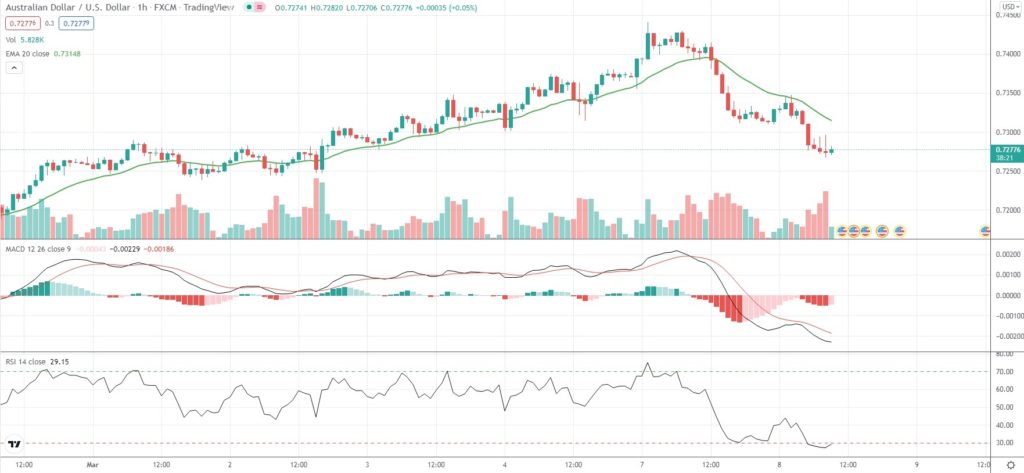AUD/USD extended a pullback from recent 4-month peak on Tuesday, as sky-high commodity prices fueled inflation risks. Market players are beginning to perceive way too high commodity prices as a potential drag on global economic growth in a longer term.
JP Morgan now forecasts a slowdown in global growth to 2.6% during the first six months of 2022, which compares with a prior forecast of a 4.9% growth.
Increased inflation pressure has prompted some experts to bring forward the expected timing of a first RBA rate hike. NAB now expects the Australian central bank to raise rates as early as August from November, as forecast previously, and two additional hikes to 0.75% by the end of the year. The firm sees RBA’s benchmark interest rate as high as 2.25% in late 2024.
“The change in our view comes alongside an upgrade to our domestic forecasts,” NAB’s chief economist Alan Oster, was quoted as saying by Reuters.
“We now see the unemployment rate below 4% by March, well ahead of RBA expectations, and core inflation at around 3.75% by mid-year compared to the RBA’s 3.25% forecast.”
NAB’s business survey showed earlier on Tuesday that activity in Australia had rebounded quickly in February, with the respective gauge reported at 13, or the highest reading since October 2021. Business confidence increased in every industry, with the biggest rise observed in recreation & personal services, mining and transport.
As of 9:21 GMT on Tuesday AUD/USD was retreating 0.51% to trade at 0.7277. Yesterday the major Forex pair climbed as high as 0.7441, which has been its strongest level since November 4th 2021 (0.7471).
Bond Yield Spread
The spread between 2-year Australian and 2-year US bond yields, which reflects the flow of funds in a short term, equaled -34.17 basis points (-0.3417%) as of 9:15 GMT on Tuesday, down from -33.5 basis points on March 7th.
Daily Pivot Levels (traditional method of calculation)
Central Pivot – 0.7356
R1 – 0.7400
R2 – 0.7485
R3 – 0.7530
R4 – 0.7574
S1 – 0.7270
S2 – 0.7226
S3 – 0.7141
S4 – 0.7055






